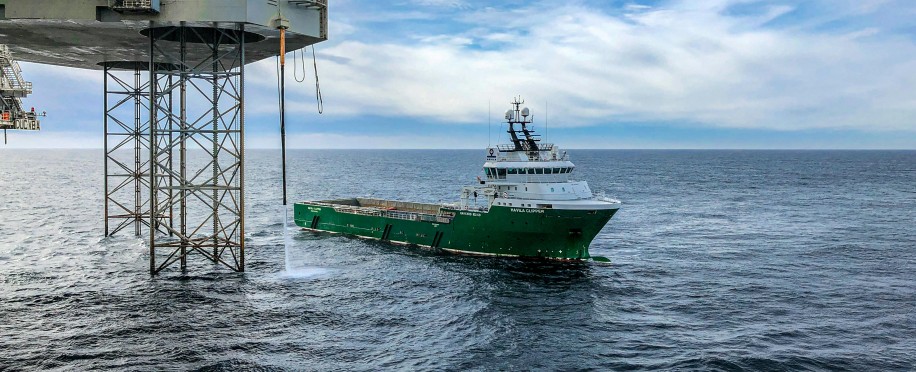Copyright © 2025 lmitac.com All Rights Reserved. Contact - Terms and Conditions - Privacy Policy - Quality Policy - Become an instructor - Vacancies - Sitemap
London Maritime Academy is a trade name for London Premier Groupversion: 2.9.0
London Maritime Academy is a trade name for London Premier Group

Posted on : 4/21/2025, 12:07:45 PM
As the world undergoes fundamental shifts in energy awareness and environmental responsibility, the maritime sector faces increasing pressure to reduce pollutants and improve performance. In response, With rising energy-related costs and stricter multinational requirements, many shipowners and designers are seeking practical, impactful solutions. This is where the Energy Efficiency Design Index (EEDI) becomes a key regulatory benchmark in maritime development.
If you're a maritime professional aiming to comply with transnational regulations, improve fuel efficiency, and minimize your ship's carbon footprint, understanding the EEDI is essential. It’s a compliance requirement and a strategic tool for stimulating environmental and economic growth across the worldwide shipping framework.
The Energy Efficiency Design Index (EEDI) is a multinational standard developed by the International Maritime Organization (IMO) to measure the energy efficiency of newly constructed ships. Expressed in grams of carbon dioxide (CO2) emitted per ton of freight transported per nautical mile (grams/tonne-mile), this metric provides a clear measure of a ship’s environmental impact.
This index applies to ships constructed on or after January 1, 2013, or those undergoing significant technical modifications. In response, the main purpose of the Energy Efficiency Design Index (EEDI) is to promote the use of efficient engines, advanced propulsion systems, and eco-friendly fuel types such as cleaner alternative fuels, thereby reducing climate pollutant emissions from the outset. The derived figure reflects a ship's specific technical design efficiency, ensuring alignment with the IMO's mandatory environmental standards.
Furthermore, the Energy Efficiency Design Index (EEDI) includes a variety of input factors: freight capacity, reference speed (typically measured at 75% of the installed capacity), fuel type, emission level, and power output.
Energy Efficiency Design Index (EEDI) calculations rely on detailed technical estimates, taking into account the hull design, installed equipment, propulsion technology, and the ship's engines. To support this, tools such as the GHG Calculator, IMO guidelines, and EEDI verification plans support this process.
To be more precise, the equation for the EEDI is:
Here, emissions are estimated using fuel consumption and carbon content, and transport work is defined as the product of freight volume and reference speed. This simple yet effective formula helps measure how efficiently the technical systems of a ship transport goods across the sea.
The expression includes the following elements:
Accordingly, the outcome must meet minimum EEDI standards depending on vessel type, such as tankers, cargo ships, or inland vessels. The standards also impose a reduction factor that decreases in phases, such as the Tier III stage, to gradually lower maritime pollution.

Maritime transport accounts for approximately 2.2% of global greenhouse gas emissions. EEDI aims to minimize this percentage by encouraging smarter design, efficient building processes, and reduced pollutants per transport mile.
The index plays a central role in MARPOL Annex VI and is supported by MEPC measures. By setting design efficiency standards and advancing innovative energy solutions, EEDI contributes absolutely to the advancement of environmentally sustainable shipbuilding.
Therefore, for professionals seeking growth, studying the Energy Efficiency Design Index and attending maritime training programs, such as UK-based maritime safety courses in London, can significantly enhance your capabilities in this domain.
The EEXI (Energy Efficiency Existing Ship Index) is another IMO measure, applying to in-service ships rather than newly built ones. While EEDI stands as a design requirement, EEXI evaluates operational performance. Both rely on similar parameters, baseline values, and standards, yet the EEXI mandates additional documentation like the Ship Energy Efficiency Management Plan (SEEMP), which not only enhances fuel efficiency but also plays a crucial role in marine vessel security, ensuring that existing ships adhere to modern performance and safety standards.
Meanwhile, the EEDI focuses on promoting cleaner ships from the design and construction phase. In contrast, EEXI promotes upgrades to current fleets. Both tools are essential to achieving IMO climate goals.
The Energy Efficiency Design Index is more than a calculation method—it is a universal indicator driving sustainable maritime growth. It not only calculates carbon emissions relative to transport work, but also helps minimize fuel consumption and contamination. By complying with EEDI standards, shipbuilders and operators can contribute to environmental protection while optimizing ship performance.